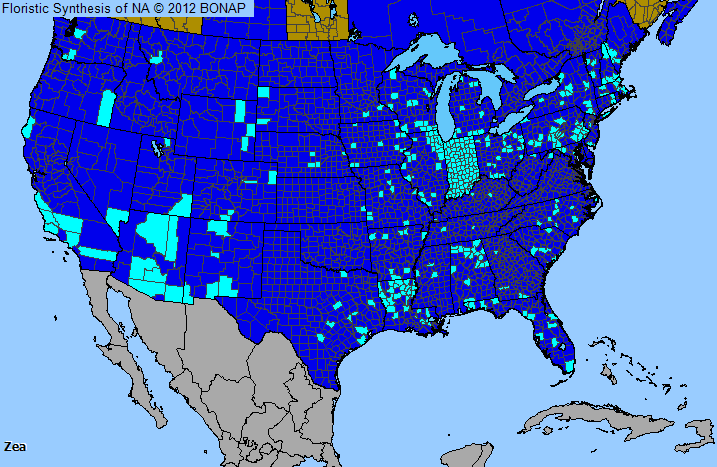
Plant Allergy Overview
Allergenicity
Moderate
Pollen Season
Summer Fall
Type
Grass
Sub-Type
Annual
Allergy Information
Corn pollen is reported to cause pollinosis, and cross-reacts with timothy grass, although it has a much weaker allergenicity. Individuals living near crop fields may develop pollinosis due to the sheer volume of exposure to the grains.
Genus Details
Corn, a single species and a member of the grass family, is an annual plant that is an important economic crop worldwide. The unbranched plant grows 3-10 feet tall. Tassels at the top of the plant are male (pollen) flowers with female (ears) flowers located lower on the stem. Flowering in temperate areas occurs primarily during summer months, but will occur during the spring or well into autumn in more southern regions, depending on the planting date. Corn has apparently the largest pollen grain size, but the large size prevents it from becoming atmospheric to the extent of other grasses.
Pollen Description
Grains are spheroidal to ovoidal, sometimes elliptical. The exine is thin and the surface is granular to finely reticuloid. Poaceae apertures are 1-porate, with the pores usually circular to ovoidal.
Grains are 22-122 micrometers in diameter.
Genus Distribution

The shaded areas on the map indicates where the genus has been observed in the United States.
 - Native, observed in a county
- Native, observed in a county  - Introduced, observed in a county
- Introduced, observed in a county  - Rarely observed
- Rarely observedSpecies in Corn Genus
Allergens & Plants Search
Enter a full or partial species name to find more information on one of over 1,200 potentially allergenic plants.
For example, you can find chenopods searching on "cheno"

